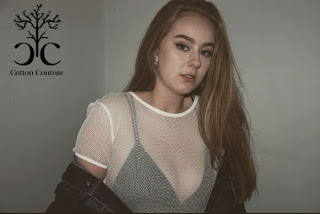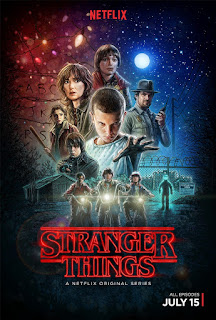How does the video for H&M's 'Bring it on' campaign promote H&M as an ethical fashion retailer?
H&M promote themselves as an ethical fashion retailer through the mise en scene, camera work and sound of the advertisement. The 'Bring it on' campaign illustrates the company's ethical fashion ethos and is promoting the recycling of other clothes as opposed to their audience buying the clothes from the company. This could appear to be a predicament for the company as they initially appear not to get anything from the ad as the audience would be encouraged to recycle rather than buy more however by creating this ethical front the audience may be persuaded to buy from the company as they are representing themselves as ethical. Throughout their advert H&M have intended to use synthetic personalisation to connect with their intended audience. I believe they have achieved this by using models aged between 18-30 (which is the intended demographic of the company) and by showing everyday life scenarios with recycling fashion as their backbone to the campaign.
At the beginning of the video an establishing shot is used in a partying environment which introduces an electronic style soundtrack which is non-diegetic throughout most of the video. This soundtrack evokes a natural feeling along with modernised music which establishes the symbiotic relationship of the ethical fashion. There is also the diegetic sound of the people laughing and dancing within the scene which adds to the energetic atmosphere. The shot is youthful and full of life with the party scene. Both establishing shots and low angle shots are used in this setting however the establishing shot is used the most as H&M focuses on the party environment to begin with as opposed to the models. This atmosphere is continued onto the next scene where food is spilt on a white top creating a mess. Here a shot reverse shot is used to show the two people at the table. In the video there is a non-diegetic voiceover of a performance poem which gives a narration of the video. In this scene the voiceover states 'the stained T-shirt' which connotes the recklessness and youthful atmosphere.
Multiple cuts are used in the editing which shows a variety of settings and therefore portrays to the audience a reflection of daily life. In these settings we first see a point of view shot being used as the woman looks into the mirror at herself as the performance poem continues with 'discoloured panties'. We could argue here that the Male Gaze has been used as the woman is wearing minimal clothes and the focus is on her underwear which is sexualising her. There is not a similar shot with a male model used.
Following this a fast paced establishing shot of a sock being throw is shown as the poem narrates 'the lonely sock'.
A medium close up ariel shot is used with the woman in the water which portrays the serenity and perhaps is attempting to convey the peace of mind the intended audience would have after they donate their clothes. The pace is fast here and shows many scenes which are mostly establishing shots. Through each of these the ethical fashion is illustrated by listing the worn clothes that H&M are encouraging the audience to donate. An establishing shot of multitudes of sheets is shown hanging between two buildings. In this shot we see the red dress which was used in a previous shot. The use of the same item of clothing emphasises the idea of reusing the fashion as we see the item in a different location. The pace slows down slightly on the shot of the two people on a rooftop with a white sheet. This establishing shot portrays the youthful and fun-loving intended audience as we have seen throughout the video. The actors have been presented to be energetic and full of life perhaps in order to portray the idea of renewal and giving new life to old clothing.
Following this the fast pace begins again until we reach a more natural scene. The establishing shot is taken in a forest environment where the model is hidden partially by a tree, creating an angelic appearance. The video stays on this setting for approximately 6 seconds which is significantly longer than any of the other shots. Diegetic sound is used in these shots with sounds of birds and trees which highlights the nature. This setting has obviously been chosen to highlight the ethical fashion and natural elements of their campaign.
After this the setting changes to a more industrial scene where the old clothes are being re-used and made into different clothing, all of which is narrated by the performance poem. The use of this shows us what H&M is doing and shows that the campaign does not hold false promises. This therefore encourages the audience to donate clothing as they can see exactly what the campaign is doing. The industrial scenes are split in half by an establishing shot of a woman in a dress which then uses a zoom in then zoom out to show a man in the same dress. This reinforces the recycling of clothes and H&M's ethical ideologies. In these establishing shots diegetic sound is used alongside the non-diegetic music with sounds of machinery in the background. The pace quickens again and shows the reusing of the old products as the poem narrates 'rip it, grind it, tear it, tear it into smaller pieces, into fibres and stitch it into something new'.
We are then brought back to a more natural scene where the diegetic bird sounds are heard again. The non-diegetic music stops at this point as the close up shots presents the woman as angelic similar to the previous scene. In the last natural scene however the shot began with an establishing shot and then went into a medium close up of the face however in this one the medium close up shot is shown first and is then followed by the establishing shot as the camera pans around the model slightly.
After this the pace begins again as it shows people putting old clothes into bags and placing them in the recycle bins. H&M have used this at the end of their video to show people physically placing old clothes into garment collection boxes and making a change which encourages the audience to do the same. The non-diegetic music begins again and the final shots shows a cyclical plot as the same sock shown in a scene at the beginning is used and placed in the woman's bag as she walks onto the beach. The sunset and the ocean along with the woman running off into the sea portrays the freedom and therefore ethical element as a tracking shot is used with a hand held camera.
Noticeably throughout the video we are aware of the time passing through multiple days. The advert begins in a low lighting setting at a party and a meal then moves to multiple scenes of daytime life with people getting dressed and ready for the day. A clear point of time is shown through the rooftop shot where the sun is rising. The natural daytime lighting is continuously used throughout the following scenes such as the one in the forest and the factory based shots. The next change in time we see is towards the end of the video where the clothes are being bundled up and taken to recycling garment collection boxes. In this scene lighting from the shot (as in no light has been added by the production team) is still used however it is from neon signs as the sky is obviously dark, proving that it is nighttime. The final showing of time is seen in the end shot with the ocean and sunset.
I believe that this usage of time progression is effective in showing that the recycling of clothes is an ongoing matter and occurs continuously along with the usage of fashion.
Overall I believe that H&M establishes the ethical fashion element through their 'Bring it on' campaign through their camera work and sound but primarily through their model choices and clothing/prop use which connotes the recycling of clothes.


Comments
Post a Comment